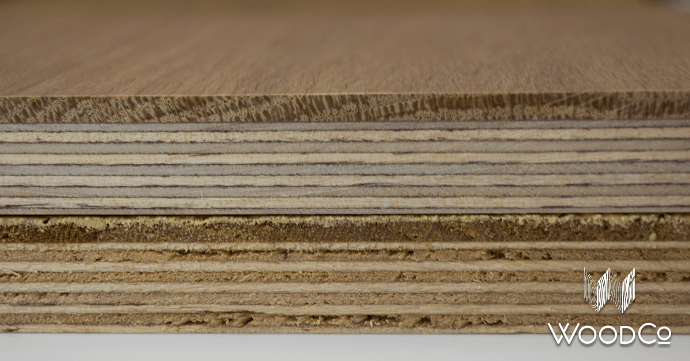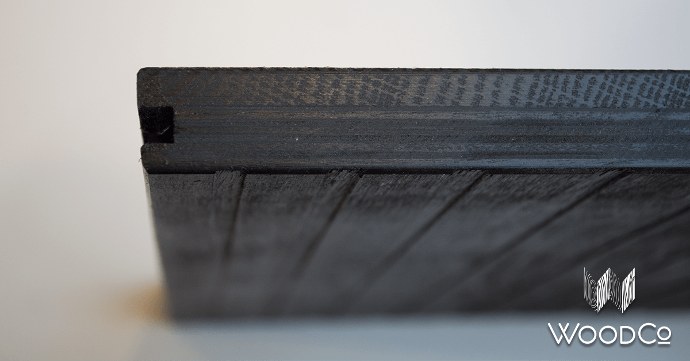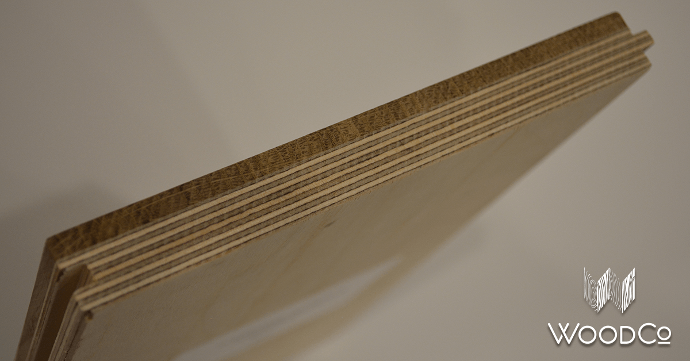Engineered wood floors are known for stability due to the plywood core. However there are a couple of things to watch for to ensure your engineered wood floor will stand the test of time!
Wear Layers
The wear layer is the piece of wood that is laminated onto the plywood substrate. A standard good quality wear layer is usually either 4mm or 6mm thick. Be careful when purchasing a floor with less than a 4mm wear layer, as this will make it difficult to sand and refinish the wood flooring if it was necessary.
Plywood
The good and the not-so-good! Both these planks (shown below) are 5/8" thick with a 4mm wear layer and may look very similar on paper. However, the quality of these two planks is very different. The top plank uses a high quality plywood that will be extremely stable whilst the bottom plank uses a lower quality plywood that could compromise the longevity of your floor.
The number one reason an engineered wood floor delaminates is not because the wear layer separates from the plywood, but the plywood itself comes apart. To minimize this risk, make sure you purchase an engineered wood floor that uses a top-quality water and boil proof Baltic Birch Plywood. For Baltic Birch Plywood to pass the water and boil proof test, a piece of plywood is submerged into boiling water for an extended period of time. If the plywood does not delaminate from the heated water, it is considered water and boil proof (WBP). You can rest assured when purchasing your wood flooring from WoodCo, as our engineered wood floors are all manufactured using the highest grade of Baltic Birch Plywood.

Milling & Hidden Problems
Another point to be careful about is when you receive samples that have a dark paint covering the bottom and sides. This is often because they are hiding something, either the plywood quality or the milling quality. In the case of the image of the black painted sample below, this engineered wood floor has milling issues. The top of the groove is level with the bottom of the wear layer, this increases the risk of delamination issues. In the second image, without the paint, the tongue and groove is milled into the plywood, minimizing the risks of the wear layer separating from the plank.


If you have any questions about engineered wood flooring, feel free to reach out to our friendly team of wood experts, info@woodco.com | (210) 298-9663. We look forward to helping you on your next wood project!